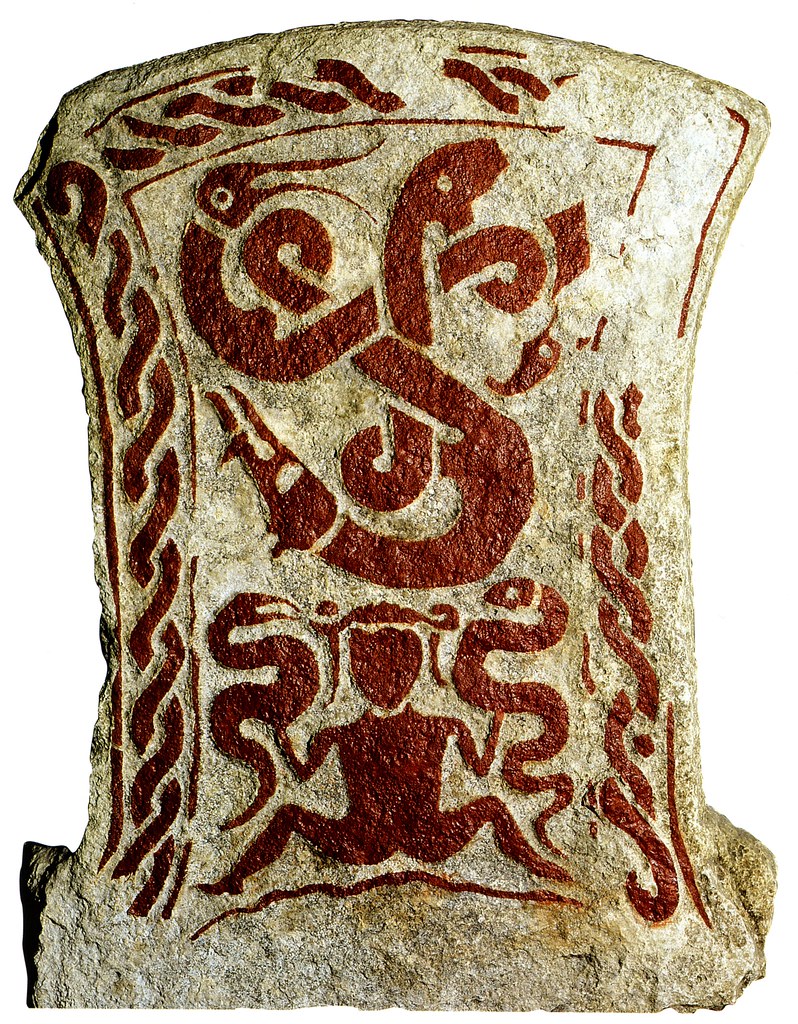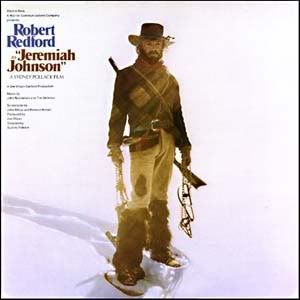The Snake-witch (Ormhäxan), Snake-charmer (Ormtjuserskan) or Smiss stone (Smisstenen) is a picture stone found at Smiss, När parish, Gotland, Sweden. Discovered in a cemetery, it measures 82 cm (32 in) in height and depicts a figure holding a snake in each hand. Above the figure there are three interlaced creatures (forming a triskelion pattern) that have been identified as a boar, an eagle, and a wolf. The stone has been dated to 400–600 AD.
Although many scholars call it the Snake-witch, what the stone depicts—an accurate interpretation of the figures—and whether it derives from Celtic art or Norse art remain debated.
It seems to me that various neopagan concerns have never been certain as what to do with the symbolism on this standing stone/grave marker. First of all, is it Odinic, Druidic, Gaulish polytheistic, proto-European witchcraft, or some combination? This style of standing stone, the serpentine symbolism, and its location would seem to suggest an Odinic origin. However, there was snake symbolism in Gaulish culture, and the Gaulish god Cernunnos was found depicted on the Gundestrup cauldron from some centuries earlier in Denmark. Also, the "snake-witch"--like Cernunnos--is depicted holding a snake; although this artifact may have been obtained in trade between Teutons and Gauls. The snake-witch herself seems to suggest an element of proto-European spiritual influence, such as the pre-Olympian "Snake goddess" of Crete.
 Also, just as interesting as the "snake-witch," is the powerful design symbol. To fully appreciate it, you must look at it and fill in the two sections which were somehow chipped off on the animal figure on the upper right. After you do that, then it's clear that this is what I would call a "double-triskellion." The boar, eagle, and wolf are formed as serpentine, with both heads and tails interwoven for this effect. The triskellion or "triple spiral" is found in many ancient European cultures. My guess is that the snake-witch stone is Odinic, with proto-European symbolism. The old Gotlanders, somewhat isolated on an island, probably held onto some aspects of pre-Odinic spirituality. As to whether or not this ties into what is known as "Norse witchcraft," I really don't know at this time. I suppose that there is the possibility or concurrent idea that this was tied to something unique to old Gothic culture and spirituality.
Also, just as interesting as the "snake-witch," is the powerful design symbol. To fully appreciate it, you must look at it and fill in the two sections which were somehow chipped off on the animal figure on the upper right. After you do that, then it's clear that this is what I would call a "double-triskellion." The boar, eagle, and wolf are formed as serpentine, with both heads and tails interwoven for this effect. The triskellion or "triple spiral" is found in many ancient European cultures. My guess is that the snake-witch stone is Odinic, with proto-European symbolism. The old Gotlanders, somewhat isolated on an island, probably held onto some aspects of pre-Odinic spirituality. As to whether or not this ties into what is known as "Norse witchcraft," I really don't know at this time. I suppose that there is the possibility or concurrent idea that this was tied to something unique to old Gothic culture and spirituality.Parallels, interpretations, and speculation
The figure on the stone was first described by Sune Lindquist in 1955. He tried unsuccessfully to find connections with accounts in Old Icelandic sources, and he also compared the stone with the Snake Goddess from Crete. Lindquist found connections with the late Celtic Gundestrup cauldron, although he appears to have overlooked that the cauldron also shows a figure holding a snake.
 Arrhenius and Holmquist (1960) also found a connection with late Celtic art suggesting that the stone depicted Daniel in the lions' den and compared it with a depiction on a purse lid from Sutton Hoo, although the stone in question does not show creatures with legs. Arwidsson (1963) also attributed the stone to late Celtic art and compared it with the figure holding a snake on the Gundestrup cauldron. In a later publication Arrhenius (1994) considered the figure not to be a witch but a male magician and she dated it to the Vendel era. Hauk (1983), who is a specialist on bracteates, suggested that the stone depicts Odin in the fetch of a woman, while Görman (1983) has proposed that the stone depicts the Celtic god Cernunnos.
Arrhenius and Holmquist (1960) also found a connection with late Celtic art suggesting that the stone depicted Daniel in the lions' den and compared it with a depiction on a purse lid from Sutton Hoo, although the stone in question does not show creatures with legs. Arwidsson (1963) also attributed the stone to late Celtic art and compared it with the figure holding a snake on the Gundestrup cauldron. In a later publication Arrhenius (1994) considered the figure not to be a witch but a male magician and she dated it to the Vendel era. Hauk (1983), who is a specialist on bracteates, suggested that the stone depicts Odin in the fetch of a woman, while Görman (1983) has proposed that the stone depicts the Celtic god Cernunnos.It also has been connected to a nearby stone relief on a doorjamb at Väte Church on Gotland which shows a woman who suckles two dragons, but this was made five centuries later than the picture stone.
Snake symbolism
Snakes were popular as a motif on later picture stones which show snake pits, used as a painful means of execution; this form of punishment also is known through Norse sagas. Snakes are considered to have had an important symbolism during the passage from paganism to Germanic Christianity. They were frequently combined with images of deer, crustaceans, or supernatural beasts. The purpose may have been to protect the stones and to deter people who might destroy them.
See also
Hyrrokkin, a female jötunn in Norse mythology who uses snakes as reins
************
3-2-16 ADDITION: I just wanted to add an interesting logo, featuring the Snake-Witch, from a concern called "Heathens and Pagans Against Censorship." Also noteworthy is that this logo---just as with the snake witch/triskellion standing stone---has both proto-European and Teutonic symbolism. However, as covered here before, the proto-Europeans used a different 5-pointed Vehmic rune.
.








